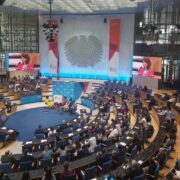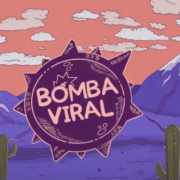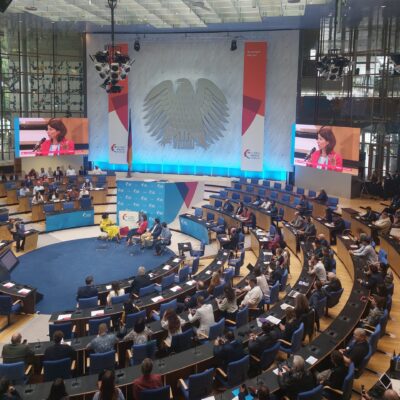While humanity is still thinking about the aftermath of the recent financial crisis that showed the world the need to reconsider its economic policies, it is perhaps also time to rethink about another problem: Illicit drug money which is invested in macroeconomic management.
The role of illicit drugs in the economy has gone beyond the simple producer-consumer relationship. In an attempt to determine the causality, different trajectories could be seen all around the world. Different circumstances and different strategies, yet, there is a unified aim: To expand the drug trafficking business.
Socio-economic impact
The societal makeup of a given community determines the level at which drugs can attract the labor force, dominate employment opportunities (no matter how dodgy that actually is) and damage or boost the economy.
In war stricken countries such as Afghanistan, for instance, illicit drugs penetrate the lives of farmers and other impoverished members of the society to become a source of income. Furthermore, in failing states where the government has lost most elements of statehood, controlling illegal markets seem to be out of reach. In some countries, the revenues of the drug market are extremely high. Research conducted by Nick Crofts from the University of Melbourne found that opium farming in Myanmar accounts for 70 per cent of total cash income.
Helping these impoverished societies to tackle drug trafficking is another challenging “Our society members are too weak to resist,” says Aram Barra, a Mexican citizen, “when drug mafia offer social services to areas that the government neglects or abandons, they technically combat unemployment through channeling the job opportunities,” he explains. “When essentials are offered to the inhabitants to improve their low living standards, they accept them. They accept being subservient to drug traffickers asthe only choice they are left with to lead a decent life”.
Poor vs. Rich
Research conducted by the ‘Studies and Threat Analysis’ Section of UNODC with the aim of counting the magnitude of illicit funds, claims that proceeds of crime amounts to 3.6% of global GDP,while and the amount of laundered money reached 2.7% of the global GDP in 2009. The question is: Are these numbers provided by developing or developed countries?
BOX:
Estimates of money laundering and/or organized crime financial volume
| Origin/Study | Year | Volume (worldwide) |
| National Criminal Intelligence Service (NCIS; Washington D.C.; USA, year 2004) | 1998 | 1.3 trillion USD |
| 2001 | 1.9 trillion USD | |
| 2003 | 2.1 trillion USD | |
| UN-Estimates (New York; USA) | 1994/1998 | 700 billion to 1 trillion USD |
| International Monetary Fund and Interpol | 1996 | 500 billion USD |
It has been generally argued that since poor countries are producers of drugs, they are expected to make the greatest share of the global production. However, this is not the absolute truth. Illegal economic operations seen in western countries, which are usually assumed to be consumers of drugs, show that their activity surpasses that of their underdeveloped counterparts. The United States seem to comprise a big share of drug trafficking activity compared to other western countries.
Skewed income distribution distorts the balance of supply and demand. Nonetheless, it is clear that foolish policies were adapted by governments that opened the doors to magnify the problem “An example of this pattern could be seen in the northern part of Italy,” said Roberto Ricci, an economic analyst. “It is not a question of poor or rich countries. It is question of illegal transactions which became legal practices adapted in developed western countries by large,” he added.
The idea of finding the solution to stop the problem has always been a controversial issue. Corrupt governments impede every corrective movement towards putting an end to drug use. In poor countries officers with low payments often help drug dealers to be released from prison by accepting a generous bribe in return.
Similar trends are found in the west, but with slight differences. Many drug consumers are detained and placed in jails but unfortunately they are the average consumers and not the virtuoso traffickers. According to Ricci, only 10 per cent of dealers are kept in jails. “They are in constant movement and those who are detained are caught from the streets and are not the actual traffickers,” he added.
Promising future?
As a result of modernization and globalization drugs find their way into every culture and every society around the globe. Various policies have been advocated by different institutions – from governmental institutions to NGO activists – in an attempt to address the problem. According to the Italian economic analyst Carla Rossi, the problem lies in the regulation and the ruling policies, which are in a desperate need of change. “In Europe there are some 2000 new drug substances that are discovered every year. The newly born items are immediately prohibited from public use until being assessed by the National Council on Drug Abuse (NSDA) to ascribe an adjective to them – healthy drugs or harmful drugs,” says “Until we reach the assessment stage, many trials are made by drug traffickers to make the best earnings out of the newly discovered materials”.
Worth mentioning also is the fact that drug traffickers have set up strong ties with officials and decision makers. Therefore, regulating laws against dealers are not likely to happen. Consequently, the drug industry uses its economic power as an instrument to press government’s decisions in its favor. Statistics and research conducted on the drug market point to shocking figures. Analysts are unable to predict how the future of the drug market looks. Humans seem oblivious to the fact that unless new and strong measures are taken to combat it, the illegal drug industry will continue to flourish.










